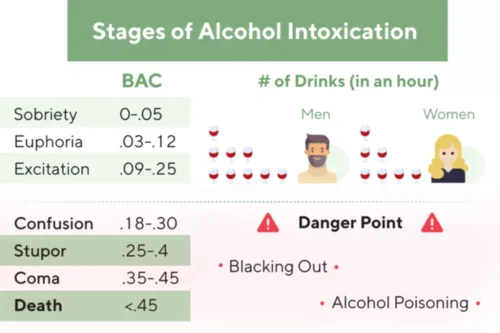
In addition to severe adverse health effects, drug misuse can lead to legal trouble, suspensions from sports, and even a fatal overdose. “In some cases the presence of these compounds is not declared on the product label. For some prohibited substances, the amount that will trigger a positive test is vanishingly small and may not be detected by routine analysis of the supplement.” The FDA has put in place stringent guidelines for supplement manufacturers but this is not without the odd blip. In 2014 roughly two-thirds of FDA recalled dietary supplements still contained banned drugs at least six months after being recalled, according to a study in the Journal of the American Medical Association. The slightest edge, be it physiological or psychological, can put winners over the line first, which is why placebos prove so effective.

Recovery Programs for Athletes
Overall, there is considerable empirical support for the efficacy of motivational enhancement interventions. Several meta-analyses have shown that brief (1–2 sessions) in-person interventions are effective at reducing at-risk alcohol and drug use (Burke, Arkowitz, & Menchola, 2003; Jensen et al., 2011; Lundahl, Kunz, Brownell, Tollefson, & Burke, 2010). Further, interventions that provide personalized feedback in the absence of individual clinician contact have also been shown to be efficacious at impacting substance use (Miller et al., 2013). A handful of studies have examined the efficacy of motivational enhancing interventions specifically among athletes, with promising results.
Other recreational drugs

Thus, the likelihood for someone to use performance-enhancing substances increases with the level of competition. Still, in line with the survey’s aim to address recreational sport, very few respondents reported to be at the international level. And those who did, most often played sports with low participation rates and low public interest in their country.
NCAA council votes to remove cannabis from banned drug list, removes limits on on-field coaches
At first sight, the finding of a higher prevalence of doping in Games compared to Artistic and CGS sports is surprising. In the context of elite sports, it is generally acknowledged that CGS sports are more vulnerable to doping than Games [41]. While there is a direct relationship between doping and performance in for instance cycling, this is not the case in for instance football, which is also reflected in WADA’s analysis of ADRVs [53]. Yet, a drawback of the applied categorization is that it does not consider athletes’ approach to their sport, but only the sport’s structure. In recreational sport, this may be more significant for doping behavior than how vulnerable to doping the sport, or the sport’s category, is.
- One other promising avenue for potential future treatment may involve the use of ketamine for substance use issues in athletes.
- There were 8,146 records with data, of which 7260 were from respondents reporting to be recreational athletes.
- For example, about one in five males between the ages of 18 and 25 think performance-enhancing drugs are the only way to become a professional athlete.
- Glucocorticoids mask serious injury because they are anti-inflammatories and affect the metabolism of carbohydrates, fat and proteins, and regulate glycogen and blood pressure levels.
- The present study aimed to estimate the prevalence of doping and over-the-counter medicine use for performance enhancement among recreational athletes in eight European countries.
- This approach is intended to protect athletes from false-positive tests resulting from naturally occurring high levels of endogenous substances, while catching those attempting to cheat by using naturally occurring substances.
Engage with new people
The recent doping scandal at the 2022 Beijing Games reminded the world of sport, doping has not gone away. What has become evident is that doping practices have evolved from the use of anabolic steroids to improve strength, to masking agents to cover banned substances and strategies to improve endurance and https://ecosoberhouse.com/article/6-ways-to-take-a-break-from-drinking-alcohol/ speed-up recovery time from injury and overtraining. Doping has been used to extend athletic careers, as compensation for professional athletes has soared over the past few decades. The core tenets of doping are well articulated by WADA, the World Anti-Doping Agency, the leading global ant-doping agency.
- “It is now well established that many dietary supplements contain compounds that can cause an athlete to fail a doping test,” explains Ron Maughan, who chairs the Sports Nutrition Group of the International Olympic Committee Medical Commission.
- This requires an independent body that protects their identity and makes sure evidence is taken seriously.
- TMS, tDCS and ketamine provide promising results for the future of addiction treatment as a whole.
Risk Factors

Some by-products of doping substances are so small they may not produce a strong enough signal for detection. Each substance the sample contains has a unique «fingerprint» and as the scientists already know the weight of many steroids, for example, they are able to rapidly detect doping. In December last year, a German TV documentary alleged negative effects of drugs in sport as many as 99% of Russian athletes were guilty of doping, although the Russian Athletics Federation described the allegations as «lies». In January 2013, the retired American cyclist Lance Armstrong admitted to doping in an interview with Oprah Winfrey, and was stripped of his seven Tour de France wins and banned from sport for life.
How is doping detected?
- He noted that WADA’s list of banned substances includes only two medications developed in Eastern Europe compared to more than 300 drugs developed in the West.
- Athletes may use a variety of drugs, such as performance-enhancing drugs, stimulants, and prescription and non-prescription opioids, to improve their performance, manage pain or injury, and deal with the stress of athletics.
- What has become evident is that doping practices have evolved from the use of anabolic steroids to improve strength, to masking agents to cover banned substances and strategies to improve endurance and speed-up recovery time from injury and overtraining.
- The scientists learned from previous research that roughly two-thirds of Asian men are missing both copies of this gene, as are nearly 10% of Caucasians.
- Additionally, a subsample of NADO and sport governing body representatives were interviewed in depth about specific approaches and interventions in their organization or federation.
- Take the idea of “complex systems” which encourages a more flexible understanding of rules and targets by people directly involved and who can better understand and adapt to rapidly-changing circumstances at local level.
The downside of this treatment is that it is not currently FDA approved and its use is considered investigational or experimental at this time in the United States. More randomized controlled studies are needed to be performed to demonstrate the potential true benefit of this treatment especially in sports population. Many athletes may be hesitant to using any treatment that was not FDA approved due to fears of violating the rules by which their sports are governed.

